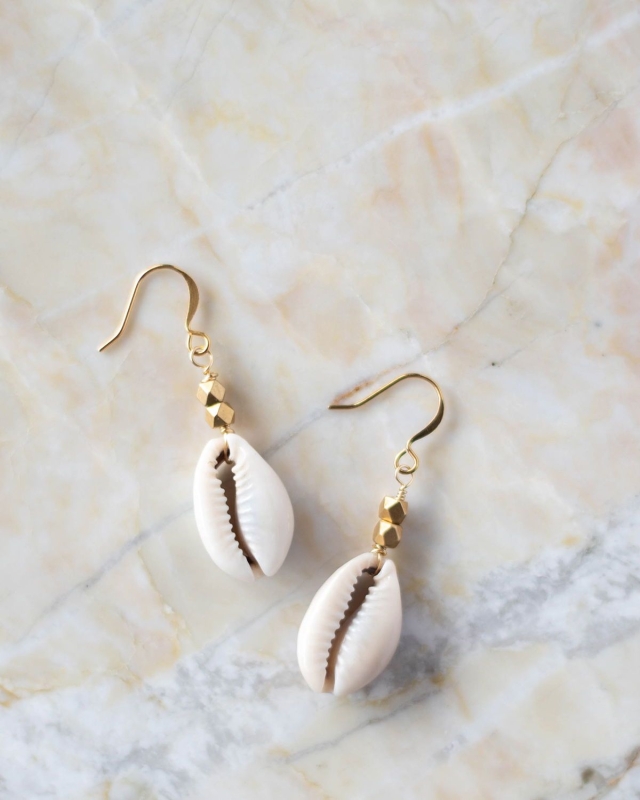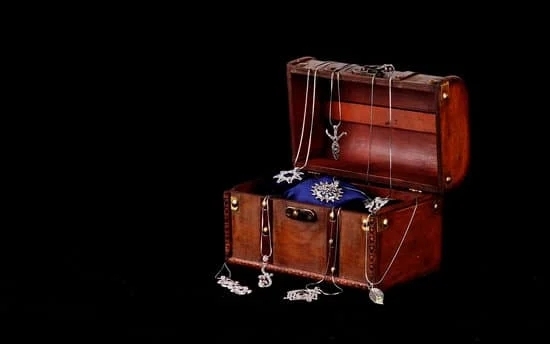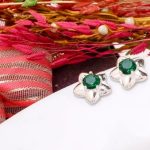The art and history of Ancient Egyptian jewelry is both fascinating and captivating. Since the days of the pharaohs, Egyptians have enjoyed purchasing, wearing, and commissioning ornamental pieces to be made as symbols of wealth and power. Jewelry in Ancient Egypt was much more than simply a pretty ornament – it held spiritual significance as well.
All classes of people within society wore jewelry in a variety of shapes and sizes. In addition to this, even gods were portrayed in artwork as being adorned with shiney gold jewelry.
Within the Ancient Egyptian culture, the gods were believed to not only protect people but also influence their everyday lives. It is no surprise that many of the common symbols used in 19th dynasty Egyptian jewelry incorporated aspects from their religious beliefs – from ankhs signifying life force to scarabs representing transformation. It was believed that by wearing these symbols it would provide protection from the world’s dangers and potential evil forces.
Egyptian people commonly used precious materials such as gold, electrum, silver, coral, lapis lazuli, turquoise, topaz and quartz for their jewelry. Due to the lack of technology during this period it is continuously impressive to view examples from this era due to its quality craftsmanship – demonstrating great care taken both in design and manufacturing process that still carries weight over 3000 years later.
Most likely pieces were crafted desired using wax cast or press molding techniques during this time frame – showcasing unique mastery established since ancient times that has been passed down and still holds relevance today in contemporary focuses on quality finishings with etched detailing designs embedded into monochrome surfaces maintaining classical aesthetics which never age out of place with regional tastes throughout history.
Overview of the Jewelry Types Used in Ancient Egypt
Jewelry was an important and desirable accessory for Ancient Egyptians. It was used to convey beauty, reflect important ritualistic purposes and honor religious practices. Various forms of jewelry were used including necklaces, bracelets, earrings, amulets and rings.
Necklaces
- A popular form of jewelry for both men and women were necklaces.
- The common material used for these objects was gold or lapis lazuli
- These pieces often depicted symbols of the gods such as a scarab beetle representing The god Khepri or a sun disk representing the Sun god Ra
Bracelets
- Apart from beaded bracelets, metal work was extremely popular type of fashion in Egypt.
- Bracelets were made from the same materials like that of the necklaces including gold and semi precious stones.
- Bracelets were often decorated with inscriptions similar to those found on rings. These would sometimes include names or prayers to various gods or goddesses.
Earrings
- Earrings also became popular during this era both amongst men and women.
Materials Used to Make Ancient Egyptian Jewelry
Ancient Egpytian jewelry was crafted from a variety of materials such as precious metals, stones, fossilized materials, and glass. Gold was the most popular material for their pieces due to its malleability and its symbolic associations with eternal life and divinity. Silver was sometimes used in conjunction with gold to add strength to the design.
Lapis lazuli and turquoise were among the most popular gemstones for adorning jewelry, often inlaid on gold ornaments. Both gems symbolized regeneration and healing properties that aligned with Ancient Egyptian beliefs about death.
Egyptians commonly used fossils from mollusks in jewelry as well since they encoded hidden messages based on their shapes. For example, scarabs represented transformation after death while cartouche rings contained hieroglyphic inscriptions of a person’s name inside an oval frame structure that symbolized protection from evil forces.
Glass beads were also used in necklaces since glass-working techniques had already been developed by this culture. These glass beads gave a sparkle effect that made them very appealing to Ancient Egypt’s nobility classes.
Tools Used to Craft Jewelry – List the tools used+Explain their significance
- Chisels: Chisels allowed ancient artisans more precision during jewelry making process.
- files : Files were used in smoothing out edges and refining details.
- Beading Reamers : These narrow tools were designed for drilling small holes into glass or stone beads.
- Adze : This tool shaped large hollow vessels like pendants.
__Highly Decorative Jewelry__: Highly decorative pieces such as pectorals featured semi-precious gems, symbols, figures of gods or goddesses all meticulously arranged on gold plaques surrounded by gold beads and stones strung together. Gold foil amulet cases held protective scrolls entwined with flora patterns while wings denoting flight, enclosed images of deities.
Artisan Craftsmanship and Influences
Artisan craftsmanship had a great impact in shaping the designs of Ancient Egyptian jewelry. Craftsmen were able to utilize diverse stone types, gold, shell, faience, glass and semi-precious stones to make jewelry of intricate detail and striking beauty. Ancient Egyptian jewelry was not only visually captivating but it also conveyed religious and spiritual beliefs as well as social status.
The production of Ancient Egyptian jewelry utilized traditional techniques that required a finesse particular to each craftsman. Intricate metal work such as filigree was one technique favored by some artisans, while others preferred crafting fluid lines of twisted gold wire or complicated beading effects using drilled beads cut from semi-precious stones. Although there were regional variations in the craftsmanship used by individual artisans, certain motifs such as scarab beetles and representation of deities were consistently common among all regions.
The influence of other civilizations around the Mediterranean can be found in Ancient Egyptian jewelry making techniques-crafted gold pieces from Nubia indicate Asiatic trends while Greek influence is evident in early Greek revivalist wares from 600 BCE. This cultural exchange provided local craftsmen with new materials and methods that would inform their own styles-with influences ranging from African tribes to Minoans and Assyrians showing up in various forms throughout Ancient Egypt’s civilizations.
Cosmology in the Jewelry Design
Objects crafted from gold symbolized the sun and its power for ancient Egyptians-adornment associated with royalty often featured gold elements that represented eternal life due to its enduring qualities over time. The image of Re at sunrise was among the most influential symbols implemented during this time period appearing on numerous artifacts such as necklaces, adorned scepters or daggers made from precious metals like electrum, copper-alloyed silver or even blackstone beads carved into shapes resembling beetles.
Symbolism could also be seen on everyday tools like coins which often depicted gods or Pharaohs playing musical instruments and accompanied by inscriptions reflecting their reigns and accomplishments; these objects intended both material tribute for their personal use along with recognition within government systems regulated by taxation laws, thus fulfilling dual purposeful roles.
Additionally serpents represented rebirth since they shed their skin every year signifying renewal – a concept commonly imprinted on funerary pendants alongside images depicting gods or goddesses such Anubis holding protective anchor signs guiding souls through afterlife safely – giving us insight into many mysteries contained within Egyptian cosmology.
Jewelry as Symbols of Status and Wealth in Ancient Egypt
Jewelry was an integral part of Ancient Egyptian culture. Not only did they use it as a form of ornamentation, but the pieces could also signify one’s social standing and royalty. It was a way to show one’s wealth, power, and importance in society. The upper echelons of society wore jewelry that was made out of precious stones like turquoise, gold and silver. Aside from signifying rank, jewelry also served religious purposes and protection.
There were various pieces of jewelry associated with social status in ancient Egypt symbolizing wealth or power. A pharaoh’s most powerful regalia was the double-plumed crown. This crown represented his authority both at home and abroad. In some depictions, pharaohs wearing these crowns are even shown making offerings to gods. Another type of adornment indicating high standing were rings and pendants shaped from precious stones with hieroglyphic inscriptions on them that held spiritual or mythological meanings.
Other types of jewelry included amulets such as the scarab which symbolized the flywheel principle for dawn (renewal). Pharaohs were also known to wear a uraeus or cobra diadem which represented their connection with Egyptian gods and goddesses like Ra or Isis.
In Ancient Egyptian culture, jewelry had more meaning than their aesthetic properties alone:
- The double-plumed crown symbolized authority.
- Rings and pendants were inscribed with hieroglyphics denoting spiritual or mythological meaning.
- Scarabs indicated renewal.
- A Uraeus crowned headdress represented connection to gods and goddesses.
The Meaning Behind Ancient Egyptian Jewelry
Ancient Egyptian jewelry was an important symbol of wealth, social status and cultural identity. Jewelry was often crafted from precious metals and stones, such as gold, silver, turquoise and lapis lazuli. It served as a sign of economic prosperity and could represent the soul’s immortality. Ancient Egyptians believed that jewelry was a representation of eternity, power and protection. The symbols used on jewelry were intentionally chosen to create powerful symbols with specific meanings.
Popular motifs included the Eye of Horus which symbolised protection against evil; the scarab beetle also appeared frequently, representing rebirth and transformation; spirals symbolising change; wings represented grace; coral represented power whilst lotuses had spiritual symbolism surrounding rebirth and purity.
The scepter also had special significance in ancient Egyptian culture with only Pharaohs having full size scepters while nobles wore smaller versions on their wrists or necks. Ankh-crosses were seen as bridges between physical and spiritual life whilst snakes were associated with renewal because it would shed its skin annually.
The scarab beetle amulet was unique in its shape and associations with protection from dark magic; it even tricked grave robbers when placed near mummified bodies – emitting a shriek if moved due to hidden levers under the beetle’s body.
The Different Types of Ancient Egyptian Jewelry + Materials Used
Ancient Egyptians produced a range of intricate forms including bead necklaces, pectorals (ornaments for the chest area) earrings, bracelets, anklets, rings and tunic decorations amongst others. Materials used included turquoise stones from Sinai for amulets which Egyptians saw as a link between heaven & earth due to their blue-green color reflecting sunlight & water where they found them.
Gold could be found in mines along both sides of their kingdom so gold artifacts could be created in mass production ranging from divine images to shields for warriors or intricate filigree pieces built using thin wires or hollowed out single pieces worked into many different designs adding texture & dimension to creations.
How Did They Make Their Jewelry?
Ancient Egyptians employed a variety of different techniques for producing items depending upon the material used – typically either cold metalworking (hammering) or lost wax casting depending on whether copper-based alloy (bronze) was used or not.
Lost wax casting involved making multiple moulds for complex pieces that needed assembly after casting whereas copper based metal offered many nuances which allowed more flexibility through hammering sheet metal out into desired shapes before engraving intricate patterns onto surfaces whilst making sure quality consistency between finished products remained high.
Examples Of Popular Ornamentations
- Neckpieces: bead necklaces incorporating multi-colored glass beads which highlighted certain features such as being strung together in elaborate strands.
- Pectorals: large ornamental pieces that could contain semiprecious stones.
- Earrings: jewels suspended from earrings made out of goldlamellae shaped like animals,flowers& insects mounted onto earclips.
- Bracelets: These ranged from solid gold bangles to coil bands formedfrom wires decorated with symbols & imagery.
- Anklets: An anklet is zig-zag shaped piece containing engraved hieroglyphics.
- Rings: Rings were worn around the fingers in an upward direction standingfor union & perfection – most commonly featuring figures united by an embrace wearing breathing masks& papyrus emblems denoting abundance.
- Tunic Decorations: These appeared as two rowsof circular discs attached across both shoulders representing divine authority.
Repurposing Ancient Egyptian Jewelry in Modern Times
The Art and History of Ancient Egyptian jewelry dates back thousands of years. Jewels made of precious metals like gold, silver, and bronze were crafted to be worn on the body by both sexes.
It was used to indicate status, wealth, as well as give the wearer protection from forces that they believed could harm them. Ancient Egyptian jewelry has been found in tombs where it was placed with the dead as a way to ensure their protection in the afterlife.
These pieces often featured intricate designs full of symbolism. Winged scarab beetles might have represented resurrection or protection from danger while deities were often depicted on jewelry for spiritual protection. The ancient Egyptians also put great value into funerary artifacts because they believed that those items played a part in aiding their spirit’s passage into the afterlife.
With such strong cultural and sentimental ties, it’s no surprise that Ancient Egyptian Jewelry still exists today. In modern times, its iconic style is sought after incorporating elements from its distant past. Modern interpretations of these artistic pieces utilize geometric shapes and stylized motifs like pyramids or lotus flowers to create necklaces and rings with contemporary qualities but still nod towards ancient aesthetics for those who wish to stay connected to this unique aspect of history.
Other adornments like earrings are now made with colored stones like lapis lazuli which are reminiscent of blue-green glazed amulet ornaments once popular among royalty for centuries before. The ongoing fascination with Ancient Egyptian Jewelry is very much alive even centuries later proving its timeless appeal across various societal mediums up until this day.
Conclusion
The Art and History of Ancient Egyptian Jewelry offers a unique insight into the past. It is both reflective of deeper theologies, as well as providing a glimpse into the ways in which people lived and decorated their homes so many centuries ago. By taking this history and applying it directly to our lives today, it has implications for how we continue to wear jewelry.
Firstly, Ancient Egyptian Jewelry showcased great skill in design and craftsmanship. Many pieces remain astonishingly intact throughout time, signaling that artisans of those days valued and took pride in their work with detail and precision being essential components. This not only means they were excellent makers and creators but that they also placed importance on presentation – something that still stands true even today when it comes to accessorizing with jewelry.
Furthermore, there are symbolic aspects which can be taken away from Ancient Egyptian Jewelry. Focusing on culture specifically, many wear jewelry as a way of honoring faith-based beliefs or expressing nostalgia for home countries or cultures appearing in the form of traditional wearable items such as necklaces, charms or amulets – each with specific meaning behind them depending on context.
Using this concept serves important symbolic purpose that is shared between tradition-bearers everywhere. Connecting to ancestry allows us to better understand ourselves by celebrating common heritage while cultivating respect for different cultures worldwide.
Overall, understanding Egyptian Jewelry style not only provides valuable insight into ways people dressed hundreds of years ago but most importantly places emphasis on why we adorn ourselves; connecting to cultural identity all over the world is one way through which individuals are reminded of where they come from and who they are at their core – a universal truth applicable at any moment in time.

Welcome to my jewelry blog! My name is Sarah and I am the owner of this blog.
I love making jewelry and sharing my creations with others.
So whether you’re someone who loves wearing jewelry yourself or simply enjoys learning about it, be sure to check out my blog for insightful posts on everything related to this exciting topic!





